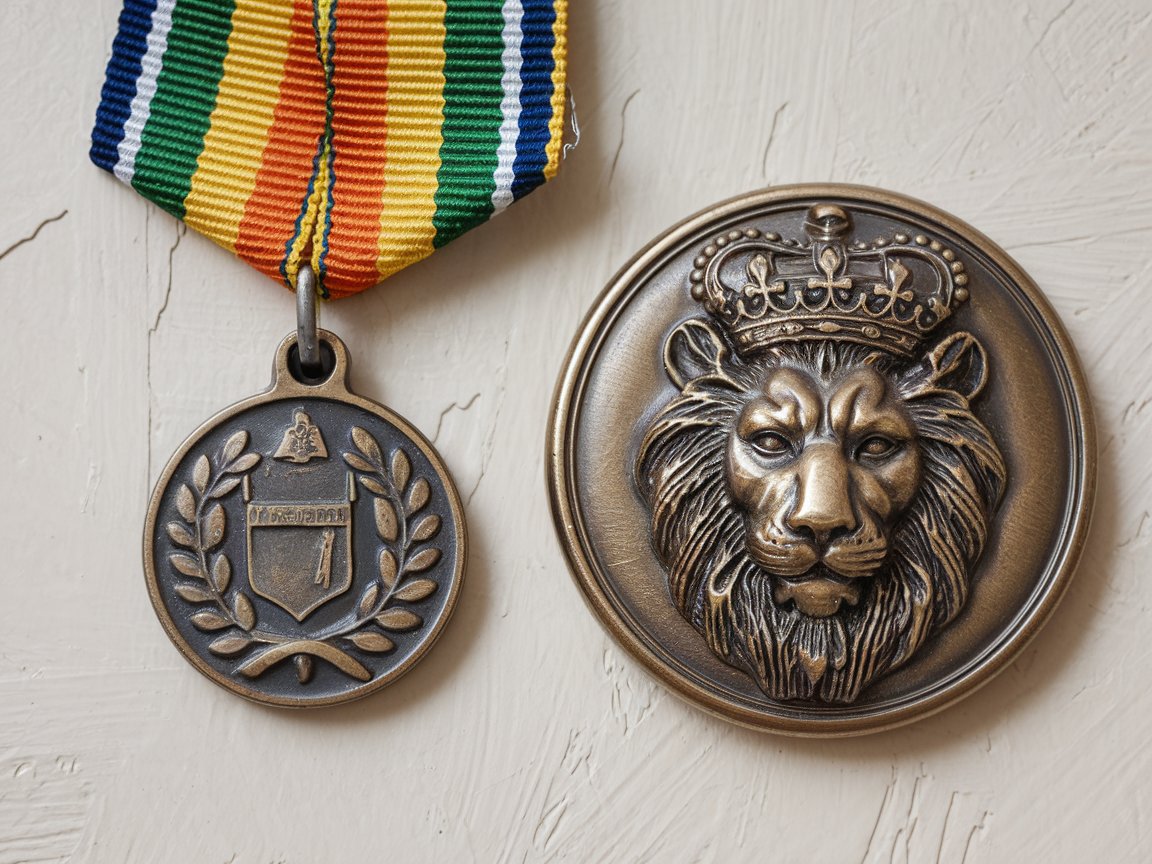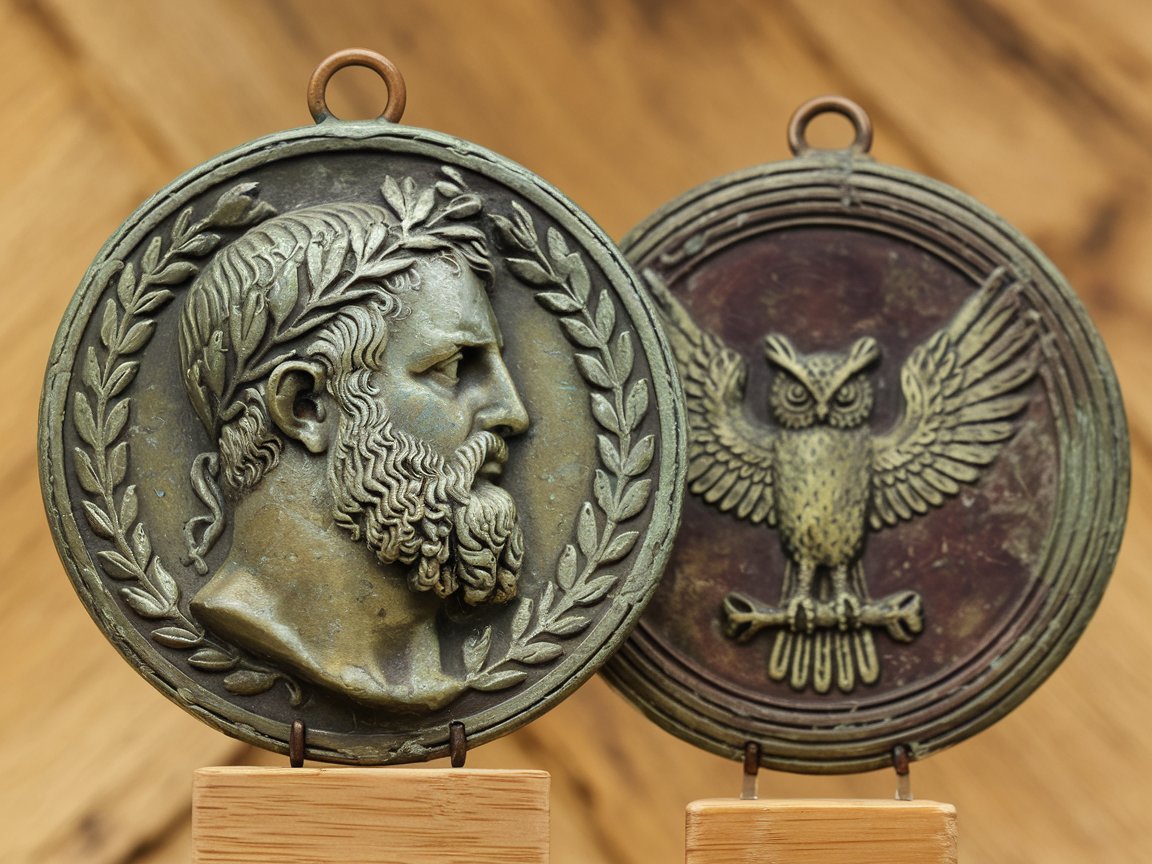Medals are typically simple, smaller, and made to be worn, while medallions are larger and more ornamental. Learn more about their differences and history.
Medals vs Medallions: Their Differences at a Glance
Medals and medallions are both terms used to describe metal discs with intricate designs. While they may seem similar at first glance, medals are typically smaller, often no larger than a few inches in diameter, as they are made to be worn with a chain or ribbon. Moreover, their designs are more straightforward and symbolic, usually representing the specific achievement or event being commemorated.
Medallions, on the other hand, are generally larger. Their designs are also more elaborate and artistic, showcasing the skill and creativity of the engraver on both sides of the metal disc. Although some medallions can be worn on a chain, their size can go over four inches, making them too large to be worn comfortably. In such cases, they are referred to as “table medallions” and may be displayed as works of art or collectibles instead.

The History of Medals and Medallions
So where exactly do medals and medallions come from? This section will explore its origins and discuss how they became popular throughout the course of history.
Ancient Origins
The earliest known examples of medals and medallions can be traced back to ancient civilizations, where they were often used as tools of diplomacy and recognition, rather than awards for sporting achievements. In ancient Greece and Rome, it was common for rulers to exchange medals and medallions as gifts to express friendship.
Roman emperors also used medals and medallions as a means of political and military gifts. They were often presented to loyal generals, foreign dignitaries, or other individuals who had made significant contributions to the empire. With this, the recipients would have held tangible symbols of imperial favor and recognition.

In terms of design, these ancient medals and medallions often featured simple profiles of the rulers or symbolic motifs that conveyed messages of power, authority, or friendship. Being cast with copper, silver, or gold, they were seen as valuable and prestigious items, often worn as jewelry or displayed as symbols of status.
One notable example of the diplomatic use of medals is the case of Alexander the Great, who reportedly gifted a golden button to the High Priest Jonathan as a reward for leading the Hebrews. This gesture was seen as a sign of friendship and recognition, strengthening the alliance between Alexander and the Jewish people.
Medieval Developments
With the advancements in metalworking and engraving, professional medalists emerged in the Middle Ages. Artists and craftsmen began to specialize in the creation of medals and medallions, leading to a significant improvement in the quality and diversity of these objects.
While medals and medallions remained a popular form of recognition for military achievements and civic contributions, the service of medalists received most of their patronage from wealthy individuals and institutions. Kings, nobles, and religious leaders often commissioned medals and medallions to commemorate important events, express religious devotion, or simply display their wealth and status, providing medalists with the resources and opportunities required for innovative designs.

Renaissance Innovation
The Renaissance period saw a renewed interest in art and culture, leading to the creation of more elaborate and sophisticated medal designs. One of the most notable innovations of the Renaissance was the development of the portrait medal. Artists began to focus on capturing the likeness of individuals, creating realistic and detailed portraits that were both aesthetically pleasing and historically significant.
The trend was particularly prevalent in Italy, where artists such as Antonio Pisanello and Pisanello pioneered new techniques for this type of medal and medallion design, establishing the foundations for the modern commemorative medal.
Medals and Medallions in Modern Society
In today’s society, medals and medallions continue to hold significant meaning and value. They are still often used to recognize achievements, commemorate events, or symbolize status.
For instance, governments worldwide bestow various military medals to honor their armed forces and veterans, serving as an award for bravery, heroism, and other exceptional contributions.
Furthermore, medals are also widely used in the world of sports to recognize outstanding athletic performance. Olympic medals, in particular, are highly sought after and symbolize the pinnacle of achievement in many sports.
Create Custom Medals and Medallions for Any Occasion
Whether you need medals for significant awards or intricate medallions to commemorate special occasions, Jin Sheu has got you covered. We are a leading manufacturer of medals and medallions with years of experience and a commitment to quality, offering a wide range of customization options to suit your unique needs.
With an expert team and state-of-the-art facilities, we combine precision and sustainable manufacturing practices to create your medals and medallions. Our experts will also be here to provide you with personalized service and full support in every step of the way, from initial design to final delivery. Let us help you create stunning and memorable pieces today!

